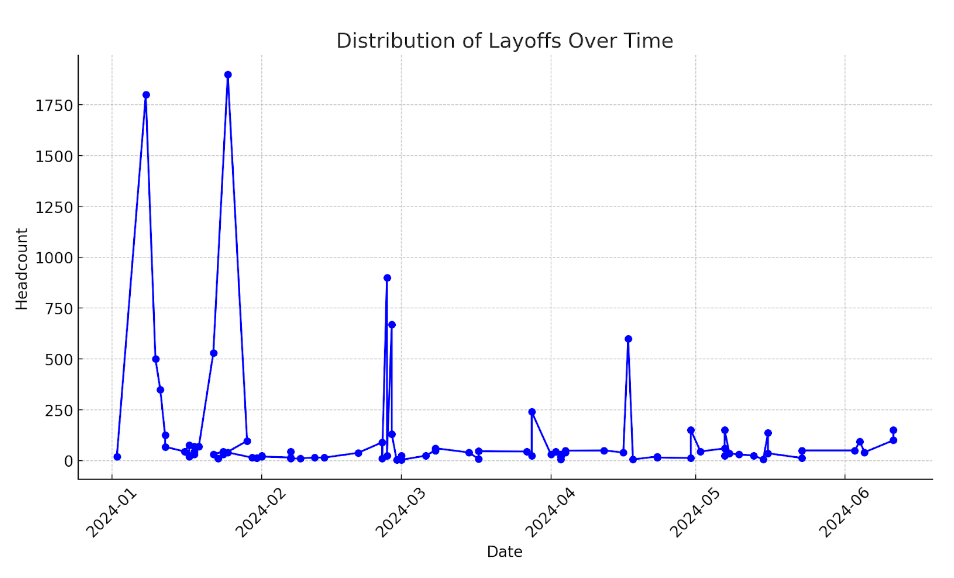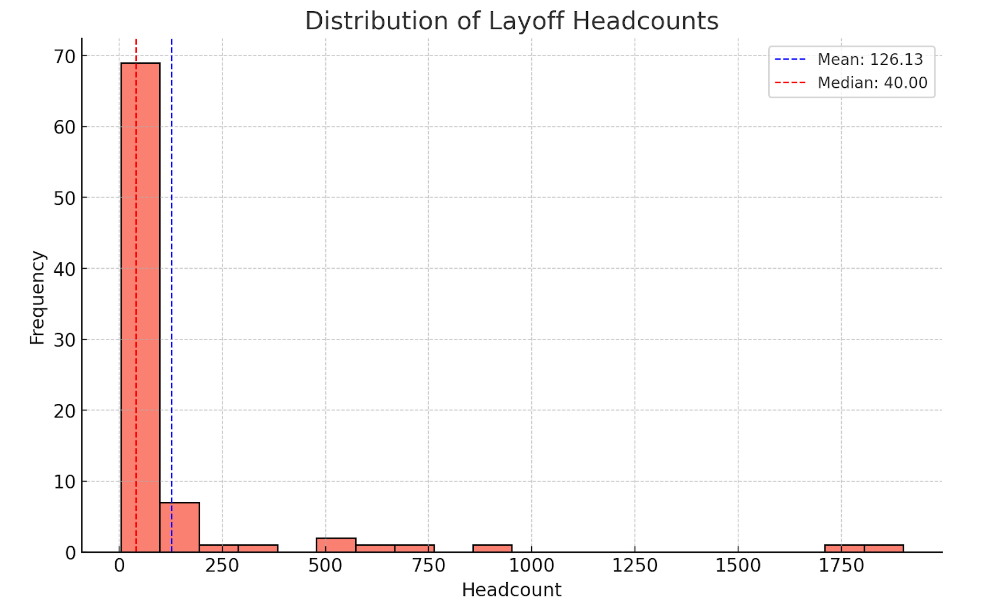In today’s world, gaming has become more than just a pastime; it’s a lifestyle, a community, and for many, a career. As an avid gamer who has closely followed the industry’s evolution, I find myself deeply concerned by the unsettling trend that has emerged in 2024. More than 10,000 talented individuals were laid off in the first half of the year alone, surpassing the total layoffs of 2023. This significant and troubling development demands a closer examination of the factors that have led to such widespread job losses in an industry that many consider booming. In this article, I’ll explore the economic pressures, executive decisions, and market dynamics that have contributed to this alarming situation, drawing on personal observations and insights from the industry.
The Economic Pressures Behind the Layoffs
The wave of layoffs in the gaming industry can be attributed to a complex interplay of economic pressures. The COVID-19 pandemic led to a surge in gaming as people sought entertainment and escapism while confined to their homes. This unprecedented boom saw companies expanding rapidly to meet the heightened demand. However, as the pandemic’s effects began to wane and the world started to return to normal, the demand for gaming began to stabilize, and the market corrected itself. This shift left many companies overextended, struggling to maintain their inflated workforce in a now stabilized market.
Executives faced rising inflation and borrowing costs, forcing them to make tough decisions to maintain financial stability. This resulted in mass layoffs as a cost-cutting measure. The initial wave of layoffs in early 2024, which saw over 2,000 industry workers let go from major players like Unity and Twitch, set a grim tone for what was to come. These decisions, driven by financial necessity, have had a profound impact on the lives of thousands of individuals.
The Human Cost of Layoffs
Behind the staggering numbers are real people with dreams, families, and careers. I recall a poignant interview with a game designer laid off in September 2023. They described feeling like they were at the bottom of a pile, with more people being added on top. This sentiment resonates with many in the industry who now face an oversaturated job market, making it even harder to find new opportunities.
The layoffs have also led to studio closures and project cancellations, further disrupting the lives of developers and the production timelines of future games. This not only affects those directly laid off but also the broader gaming community, which may see delays and cancellations of anticipated titles.
A Market Paradox
Ironically, the gaming industry isn’t in dire financial straits. Market analyst Newzoo estimated that the global video game industry would generate $184 billion in 2023, indicating a return to growth. However, the distribution of this wealth is highly uneven. Companies like Nintendo continue to hire and expand, while others are tightening their belts.
One of the most striking examples is BioWare. In August, BioWare’s general manager, Gary McKay, announced 50 job cuts as part of a move towards a “more agile and focused studio.” Despite promises that the layoff process would be handled with empathy and respect, many former employees feel shortchanged. Seven ex-employees are even suing the company for better severance, highlighting the inadequate compensation for years of hard work and dedication.
The Changing Dynamics of Player Engagement
The shift in player engagement and spending patterns has also contributed to the layoffs. Players are increasingly dedicating their time to a few dominant games like Roblox and Fortnite, which continuously update their content through player-driven creator ecosystems. This shift has forced other developers to reconsider their strategies, often resulting in layoffs as they attempt to adapt.
Matthew Ball, a video game investor, explained in an interview that while gaming’s long-term prospects remain positive, the lack of material growth in players or spending presents significant challenges. Players are spending more time in fewer games, making it difficult for other titles to compete. This change in player behavior has had a ripple effect across the industry, contributing to the current wave of layoffs.
Visualizing the Impact
To better understand the scale and distribution of these layoffs, we can look at some visual data representations.
Distribution of Layoffs Over Time
 The graph below illustrates the distribution of layoffs over time. It’s evident that layoffs have been a consistent issue throughout the first half of 2024, with certain dates experiencing higher spikes. This visualization underscores the persistent instability within the industry, impacting thousands of workers.
The graph below illustrates the distribution of layoffs over time. It’s evident that layoffs have been a consistent issue throughout the first half of 2024, with certain dates experiencing higher spikes. This visualization underscores the persistent instability within the industry, impacting thousands of workers.
Layoffs by Studio Type
 A closer look at the types of studios affected reveals that console game studios have borne the brunt of the layoffs, followed by mobile game studios. This pattern reflects broader industry trends, where console and mobile gaming dominate the market but also face intense financial pressures.
A closer look at the types of studios affected reveals that console game studios have borne the brunt of the layoffs, followed by mobile game studios. This pattern reflects broader industry trends, where console and mobile gaming dominate the market but also face intense financial pressures.
Console studios have experienced the most layoffs, likely due to the high costs associated with console game development and the fluctuating market demand. Mobile gaming, while profitable, has also seen significant layoffs, potentially due to market saturation and the intense competition in the mobile gaming space.
Although smaller than console and mobile studios, PC studios have also faced layoffs, reflecting the broader financial pressures in the industry. The emerging market for VR and AR has not been immune to layoffs either, indicating challenges in achieving profitability and widespread adoption. Indie studios, often operating with smaller teams and budgets, have seen layoffs as well, highlighting the precarious nature of indie game development.
Layoffs by Parent Company
 When examining layoffs by parent company, it becomes clear that some of the industry’s biggest names, such as Tencent and Vivendi, have implemented significant layoffs.
When examining layoffs by parent company, it becomes clear that some of the industry’s biggest names, such as Tencent and Vivendi, have implemented significant layoffs.
Tencent, as one of the largest gaming companies globally, has implemented a significant number of layoffs. This is reflective of the broader economic pressures and market corrections affecting even the biggest players. Another major player, Vivendi, has also seen substantial layoffs, underscoring the widespread nature of the issue, affecting companies regardless of size.
Electronic Arts (EA), known for its numerous game titles, highlights the challenges in maintaining profitability and adapting to changing market conditions through its layoffs. Despite being a tech giant, Microsoft’s gaming division hasn’t been immune to layoffs, indicating financial recalibrations within the company. Activision Blizzard, following its merger with Microsoft and subsequent restructuring efforts, has also experienced notable layoffs.
Ubisoft, with its vast portfolio, reflects internal restructuring and cost-cutting measures through its layoffs. Even with profitable segments like pachinko, Sega has laid off employees in its gaming division, showing that no segment is entirely safe from economic pressures. Square Enix, known for its RPGs, highlights the financial strain on companies heavily reliant on blockbuster releases through its layoffs.
Take-Two Interactive’s financial struggles and layoffs underscore the volatile nature of the gaming industry. Despite its strong market presence, Sony’s gaming division has also seen layoffs, reflecting broader economic challenges.
Headcount Statistics
 The histogram shows the distribution of layoff headcounts. While the median layoff size is around 40 employees, there are instances of much larger layoffs, which significantly raise the average headcount to approximately 126. This disparity highlights the varying scales of layoffs across different companies.
The histogram shows the distribution of layoff headcounts. While the median layoff size is around 40 employees, there are instances of much larger layoffs, which significantly raise the average headcount to approximately 126. This disparity highlights the varying scales of layoffs across different companies.
The Long-Term Consequences
The ripple effects of these layoffs are profound. There’s a massive loss of institutional knowledge as experienced workers are let go. This brain drain can severely impact the quality and innovation of future games. Moreover, the uncertainty and instability might push talented individuals to leave the industry altogether, seeking more stable careers elsewhere.
Reflecting on this, I can’t help but feel a sense of frustration. The industry I love is being driven by short-term financial goals at the expense of its most valuable asset: its people. The layoffs and closures not only harm the immediate victims but also the industry’s future, as it risks losing the very talent that drives its success.
Broader Industry Impacts
The layoffs are not confined to specific types of studios or geographic locations. They span across various sectors within the gaming industry, impacting both small indie developers and large AAA studios. For instance, companies like Airship Syndicate and People Can Fly have also been affected, highlighting that the issue is industry-wide and not just isolated to the biggest names.
In addition, the layoffs have triggered a wave of litigation. Former Dragon Age: Dreadwolf developers from BioWare are suing the company for better severance. This lawsuit underscores the dissatisfaction and desperation among laid-off employees, many of whom have dedicated years, if not decades, to their respective companies.
The Future of the Industry
As we move through 2024, the gaming industry faces a critical juncture. The “survive till ’25” mentality prevalent among companies suggests that the current state of flux may persist for some time. The hope is that the industry can find a balance between economic realities and the need to sustain its workforce.
Looking Forward
The staggering number of layoffs in the gaming industry in the first half of 2024 is a multifaceted issue. It stems from economic pressures, executive decisions, and changing market dynamics. The human cost is immense, affecting not just those laid off but the entire ecosystem of game development and production. As someone who deeply cares about this industry, I hope that moving forward, we can find ways to support and sustain the talented individuals who make gaming possible.






